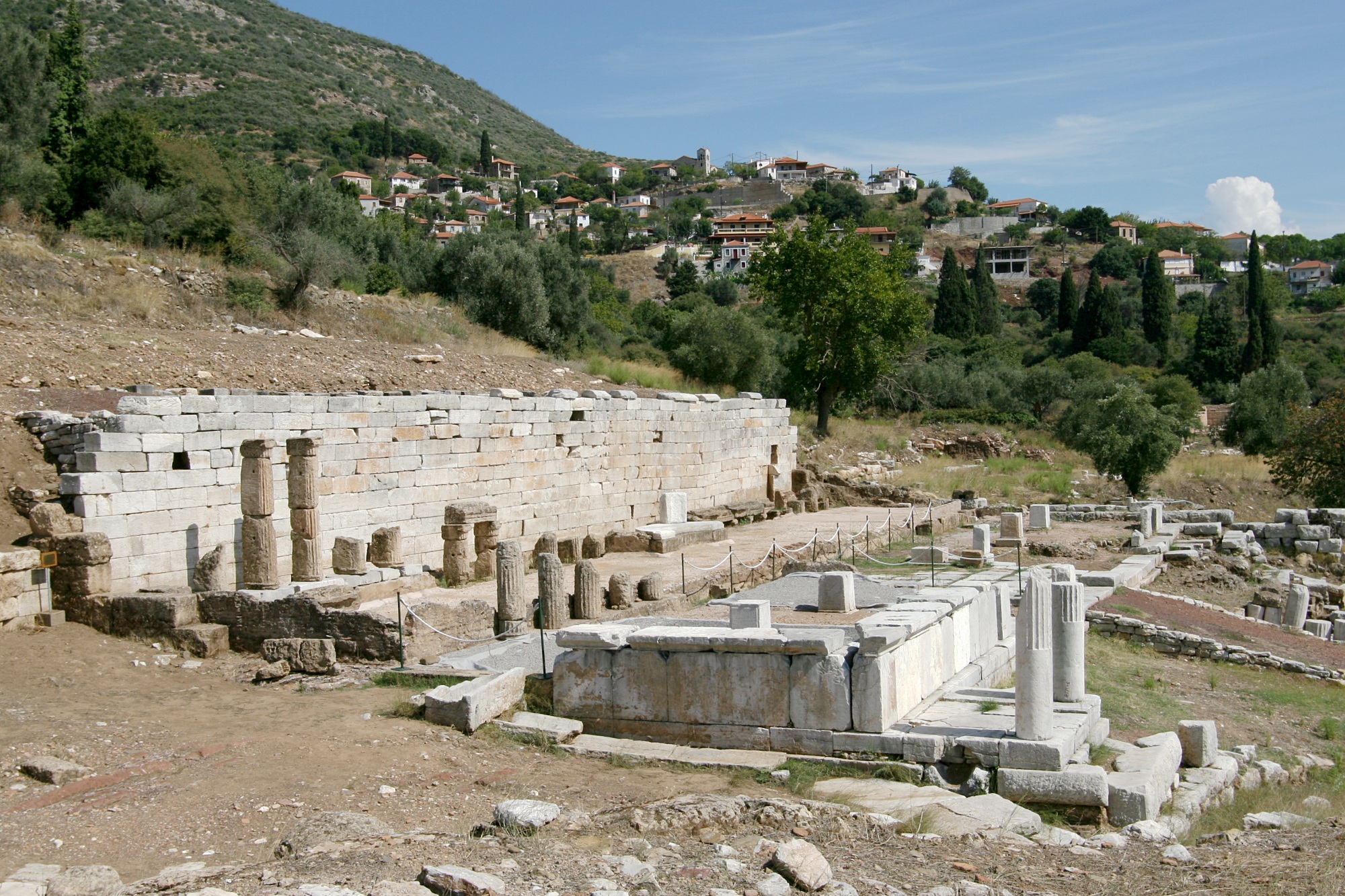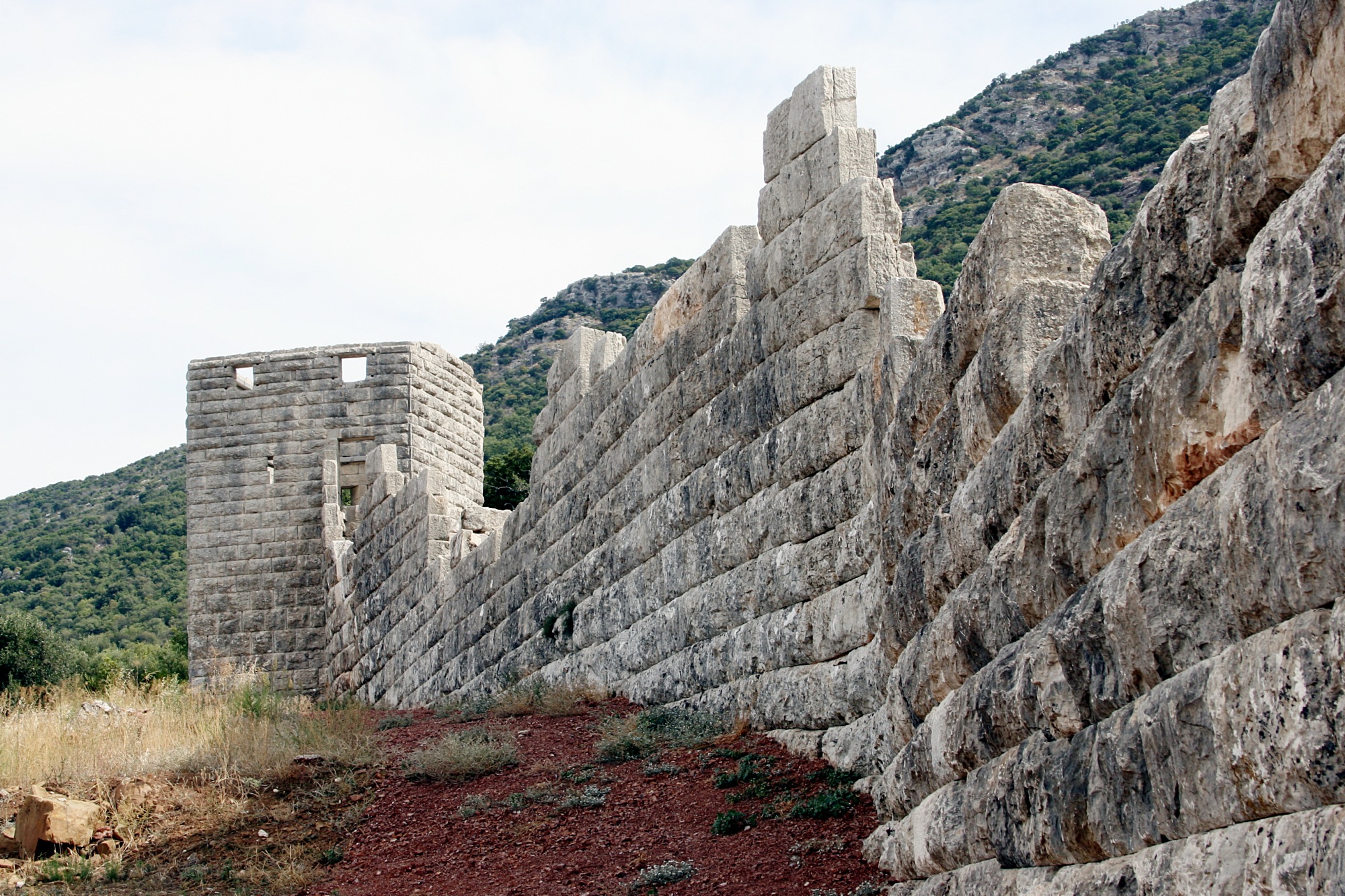Mount Ithome on:
[Wikipedia]
[Google]
[Amazon]
 Mount Ithome (
Mount Ithome (

 The Homeric village of Ithome was probably on the summit, which is flat. In the Bronze Age, a temple dedicated to
The Homeric village of Ithome was probably on the summit, which is flat. In the Bronze Age, a temple dedicated to
 Mount Ithome (
Mount Ithome (Greek
Greek may refer to:
Greece
Anything of, from, or related to Greece, a country in Southern Europe:
*Greeks, an ethnic group.
*Greek language, a branch of the Indo-European language family.
**Proto-Greek language, the assumed last common ancestor ...
: Ἰθώμη) or Ithomi, previously Vourkano(s) ( el, Βουρκάνο(ς)) or Voulcano(s) ( el, Βουλκάνο(ς)), is the northernmost of twin peaks in Messenia
Messenia or Messinia ( ; el, Μεσσηνία ) is a regional unit (''perifereiaki enotita'') in the southwestern part of the Peloponnese region, in Greece. Until the implementation of the Kallikratis plan on 1 January 2011, Messenia was a ...
, Greece
Greece,, or , romanized: ', officially the Hellenic Republic, is a country in Southeast Europe. It is situated on the southern tip of the Balkans, and is located at the crossroads of Europe, Asia, and Africa. Greece shares land borders ...
. Mount Ithome rises to about , about over Valyra, the seat of Ithomi, the former municipality. The other peak is Mount Eva ( el, Εύα), , connected to Mount Ithomi by a thin ridge long.
Mount Ithome is north of Kalamata
Kalamáta ( el, Καλαμάτα ) is the second most populous city of the Peloponnese peninsula, after Patras, in southern Greece and the largest city of the homonymous administrative region. As the capital and chief port of the Messenia regi ...
on the Gulf of Messenia, east of Pylos, seat of Bronze Age Messenia, and north of Messini
Messini ( el, Μεσσήνη, before 1867: Νησί ''Nisi'') is a municipal unit (''dimotiki enotita'') and the seat town (''edra'') of the municipality (''dimos'') of Messini within the regional unit (''perifereiaki enotita'') of Messenia in th ...
, modern namesake of ancient Messene
Messene (Greek: Μεσσήνη 𐀕𐀼𐀙 ''Messini''), officially Ancient Messene, is a local community within the regional unit (''perifereiaki enotita'') of Messenia in the region (''perifereia'') of Peloponnese.
It is best known for the ...
, nestled under the cliffs of Mount Ithome. From the top the whole valley of the Pamisos river can be viewed eastward to Mount Taygetus
The Taygetus, Taugetus, Taygetos or Taÿgetus ( el, Ταΰγετος, Taygetos) is a mountain range on the Peloponnese peninsula in Southern Greece. The highest mountain of the range is Mount Taygetus, also known as "Profitis Ilias", or "Prophet ...
and southward to the Gulf of Messenia. The site is highly defensible and yet off the main road; in this case, the Kalamata-Pylos road.
Etymology
Ithome
Like most ancient names the etymology of ''Ithome'' is not certain. It is also the name of a town in Thessaly, although Reece notes evidence that the one in Thessaly was originally called ''Thome''.Vurkano
The pre-independence name Vurcano has had many variants: Vourkano, Voulkanos, Vulcano, Voucano, Boulcano, Dorkano, Voulkani, etc. One of the earliest records of a place called Bulcano is ''The Domains and Fiefs of the Principality of Achaia'', composed for Marie of Bourbon, 1364. The Grand Seneschal of the Kingdom of Naples, Niccolo Acciajuoli, is said to possess ''Lo Castello de Bulcano'' (Messene) as a fief. The monastery on top, which dates to no later than the reign of the Byzantine emperor, Andronikos II Paleologus, 1282-1328, was probably known as Vurkano even then. TheArchaeological Museum of Messenia
The Archaeological Museum of Messenia is located in Kalamata, the capital of Messenia in southern Greece.
The museum is built on the site of the city's old market hall. Among else its collection includes the finds which were formerly kept in the ...
dates the name Vourkano to the 10th century.
Mavromati
Mavromati is segmented mavr-oma-ti, "place of the black eye" from mavros, "dark," and omma, "eye," or ommation, "small eye," a common name for springs.Geography

 The Homeric village of Ithome was probably on the summit, which is flat. In the Bronze Age, a temple dedicated to
The Homeric village of Ithome was probably on the summit, which is flat. In the Bronze Age, a temple dedicated to Zeus
Zeus or , , ; grc, Δῐός, ''Diós'', label= genitive Boeotian Aeolic and Laconian grc-dor, Δεύς, Deús ; grc, Δέος, ''Déos'', label= genitive el, Δίας, ''Días'' () is the sky and thunder god in ancient Greek reli ...
Ithomatas (Zeus of Ithome) existed there. It was torn down and rebuilt as a Christian church and monastery no later than the early 14th century from the same stone. In the 17th century this monastery of Panagia Voulkanou, or Moni Voulkanou, was closed, except for a caretaker, to become known as the Old Monastery. The new monastery was constructed on the lower east slope of Eva. It was a staging point in the Greek War of Independence and also houses a noted library containing ancient manuscripts.
Ithomaea ( grc, ἰθώμαια), was an annual festival celebrated at Ithome, in honour of Zeus Ithomatas and originally a musical contest was held.
The classical town of Ithome was on the lower west flank of Mount Ithome, which forms a bowl in the side of the mountain. The location was selected as the site for the city of Messene
Messene (Greek: Μεσσήνη 𐀕𐀼𐀙 ''Messini''), officially Ancient Messene, is a local community within the regional unit (''perifereiaki enotita'') of Messenia in the region (''perifereia'') of Peloponnese.
It is best known for the ...
(not the same as the modern city of Messini
Messini ( el, Μεσσήνη, before 1867: Νησί ''Nisi'') is a municipal unit (''dimotiki enotita'') and the seat town (''edra'') of the municipality (''dimos'') of Messini within the regional unit (''perifereiaki enotita'') of Messenia in th ...
) when it was rebuilt by Epaminondas
Epaminondas (; grc-gre, Ἐπαμεινώνδας; 419/411–362 BC) was a Greek general of Thebes and statesman of the 4th century BC who transformed the Ancient Greek city-state, leading it out of Spartan subjugation into a pre-eminent posit ...
in 369 BC. Excavations there in recent decades have uncovered evidence of a settlement going back to the Stone Age. The location of Messene is marked by massive city walls that include the east side of the ridge, where they protect the ancient zig-zagging road to the summit, the top of the ridge, a wide area around the bowl and end against the mountain on the north, an approximately rectangular circuit. The mountain itself protects the east side. These defenses were probably restored, rather than constructed anew, by Epaminondas.
Within the lower part of this wide circuit are the ruins of the ancient city. About up the slope is the modern village of Mavromati, occupying a small portion of the ancient city. It is a subdivision of the municipality of Messene
Messene (Greek: Μεσσήνη 𐀕𐀼𐀙 ''Messini''), officially Ancient Messene, is a local community within the regional unit (''perifereiaki enotita'') of Messenia in the region (''perifereia'') of Peloponnese.
It is best known for the ...
. Mavromati is built around the key feature of the city, one which made its large size possible, a large surface spring flowing out of the mountain through a hole in the rocks. A klepsydra, or "spring catchment," has been maintained as a village watering place. That is it is ancient is shown by the ancient system of channels constructed from it to the ancient urban area below. Mavromati is at , thus Messene was essentially at and Mount Ithome loomed at over it.
As the most defensible point in the surrounding territory, Ithome was the center of Messenian resistance to Sparta during the Messenian Wars Messenian Wars refers to the wars between Messenia and Sparta in the 8th and 7th centuries BC as well as the 4th century BC.
* First Messenian War
*Second Messenian War
The Second Messenian War was a war which occurred ca. 660–650 BC between th ...
in the 7th and 6th centuries BC. Ithome was also the center of the Helot
The helots (; el, εἵλωτες, ''heílotes'') were a subjugated population that constituted a majority of the population of Laconia and Messenia – the territories ruled by Sparta. There has been controversy since antiquity as to their e ...
revolt in 465 BC after an earthquake in Sparta. This revolt is the Third Messenian War
The helots (; el, εἵλωτες, ''heílotes'') were a subjugated population that constituted a majority of the population of Laconia and Messenia – the territories ruled by Sparta. There has been controversy since antiquity as to their exa ...
.
See also
* Ithomi *Messene
Messene (Greek: Μεσσήνη 𐀕𐀼𐀙 ''Messini''), officially Ancient Messene, is a local community within the regional unit (''perifereiaki enotita'') of Messenia in the region (''perifereia'') of Peloponnese.
It is best known for the ...
* Messenia
Messenia or Messinia ( ; el, Μεσσηνία ) is a regional unit (''perifereiaki enotita'') in the southwestern part of the Peloponnese region, in Greece. Until the implementation of the Kallikratis plan on 1 January 2011, Messenia was a ...
Notes
External links
* * * {{cite web , title=Αρχαια Μεσσηνη , work=Ancient Messene Monuments , publisher=Society of Messenian Archaeological Studies , url=http://www.ancientmessene.gr/site/index_en.php , accessdate=19 July 2015 , url-status=dead , archiveurl=https://web.archive.org/web/20150228080433/http://www.ancientmessene.gr/site/index_en.php , archivedate=28 February 2015 Populated places in ancient Messenia Landforms of Messenia Mountains of Peloponnese (region) Locations in Greek mythology